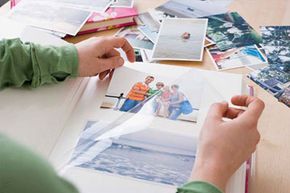Family portraits have come a long way since the days of posing as the photographer hid beneath a black sheet. Now you probably take countless digital pictures without worrying too much about whether or not everyone is holding his or her pose.
But digital images can pile up in your computer just as their printed ancestors piled up in boxes in your closet. Your photo collection most likely includes both digital and print photos, and depending on how many photos you have, organizing them can take an awfully long time. First, you'll want to determine the purpose of your photo collection -- maybe you're archiving pictures of your children or a great vacation. When you figure out how you want to use your photos, you'll gain insight into how they should be organized. If you plan to share your photos with others, think about what may make them most interesting to your audience. For example, you may want to add captions or display your photos in either a traditional or digital scrapbook [source: Sutton].
Advertisement
Organizing your photos will make them accessible and easier to enjoy and share. Instead of rooting through closets and computer folders, you can find that certain shot you're looking for in no time. Your photos will also be safe once they're organized properly -- prints need to go in photo-safe sleeves and boxes, and digital photos need to be backed up in more than one location. By scanning old prints, you can integrate them into your digital collection and have all your photos at your fingertips [source: Better Homes and Gardens].
Sure, sorting through all those photos may seem like a daunting task, but it's a great excuse to enjoy long-forgotten moments. Read on for tips on how to best start organizing your prints.
Advertisement


